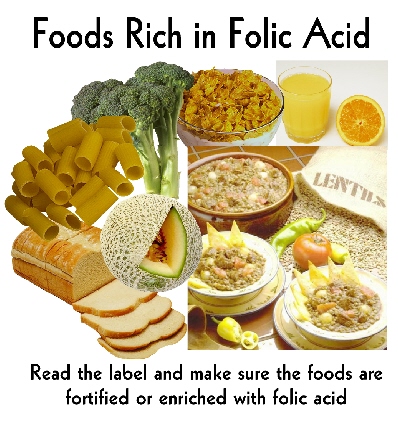Folic Acid (Pteroyliglutamic Acid): Nutritive Significance, Clinical Manifestations Of Deficiency And Treatment
Foods Rich In Folic Acid

A Clinical Overview
Folic acid molecule consists of a pteridine ring, para-amino benzoic acid and 1-glutamic acid. The free form does not occur commonly in nature. Foods and tissues contain several folate compounds (pteroylpolyglutamiates). The main form present in human plasma and CSF is 5- methyltetrahydropteroyl monoglutamate. Rich dietary sources are yeast, liver, nuts, green vegetables and chocolate. Folic acid is lost by boiling the articles of food in a large volume of water. Average requirement is 200 to 300 ug/day. The vitamin is absorbed in the proximal small intestine after hydrolysis of polyglutamates. Human body can store about 6 to 10 mg, especially in the liver. Megaloblastic anemia has developed in volunteers after 10 to 20 weeks of dietary deprivation. Dietary deficiency is widely prevalent in developing nations. It is seen most in pregnant women and children.
Megaloblastic Anemia Due To Folate Deficiency

Pregnancy Can Also Be A Cause Of Folate Deficiency

Alcohol Intake Increases Folate Requirements

Causes Of Folate Deficiency
- Dietary inadequacy of animal foods and green vegetables
- Malabsorption states
- Increased demands due to pregnancy, lactation, growth and intercurrent illnesses in children.
- Alcohol intake increases folate requirements
- Accelerated erythropoiesis as in hemolytic anemia
- Other disorders like tuberculosis, rheumatoid disease and malignancy increase folate requirements.
- Several drugs interfere with the metabolism of folates, e.g, amethopterine, pyrimethamine, trimethoprim, hydantoins and oral contraceptives.
- Folate losses may occur in several disorders of skin and the intestinal tract.
- Inborn errors of metabolism may interfere with the utilization of folate.
Folate deficiency leads to megaloblastic anemia and similar changes in several rapidly proliferating tissues. In the body, the metabolic pathways of folates and vitamin B12 are closely inter-related. In many cases of nutritional anemias, combined deficiencies of Iron, folate and to a smaller extent B12 operate.
Treatment: Dietary deficiency can be corrected by giving 5 to 10 mg of folic acid orally, in addition to dietary improvement. Pregnant and lactating women, children and alcoholics require prophylactic supplementation. In poor communities, routine folic acid supplementation in pregnancy (1 mg/day) reduces the incidence of premature births. Premature infants should be given folate supplementation.
© 2014 Funom Theophilus Makama








